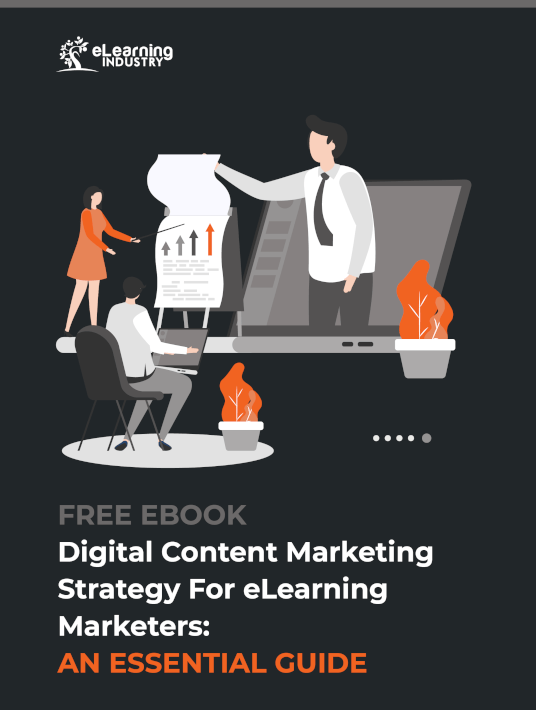What eLearning Marketers Should Do To Create An Effective Editorial Calendar
Content marketing is about more than writing a few blog posts and hoping people will find them. This is where an editorial calendar comes in handy. Strategy drives good content marketing, which means you need a comprehensive plan to guide your company’s content marketing for the future.
Once you’ve evaluated your target audience and set goals for your marketing efforts with a content marketing strategy, you need an editorial calendar. This calendar will make it much easier to keep track of goals. With an editorial calendar, you can manage projects as they roll in. This will help you to put together promotion plans for everything you create.
But it all starts with a winning content marketing strategy.

A Content Marketing Strategy For Every Scenario
Before anything is designed or built someone puts a plan together. Whether it’s a website, the interior of a home, or a dress for the Oscars, you'll need a strategy. This plan pulls together complementary swatches of color, different textures or fabrics, and even potential typefaces. It gives anyone who looks at it a firm idea of the overall vision. This is your content marketing strategy.
Content marketing is a long game. The more you write, the more often the right customers will find you. A content marketing strategy ensures your team is on the same page. It also enables you to scale up when the time is right. Such a strategy holds everyone accountable for his or her goals.
Your overall content marketing strategy will vary depending on your company’s needs. You might have different goals and resources. Or you might not be set up for certain types of content. If you don’t have a graphic designer on staff, for instance, it might be challenging to create an infographic.
Regardless of the circumstances of your content marketing strategy, you’re mapping out a plan so you can create this fantastic content. This is where an editorial calendar comes into play.
The Incredible Power Of An Editorial Calendar
If a content marketing strategy is to succeed, it cannot be cobbled together at the last moment. A content marketing strategy should include an editorial calendar that plans out your content one month at a time. It should also focus on leaving room for refinement along the way. Editorial calendars don’t have to be set in stone. They should offer a pre-planned structure but leave room for tweaking.
Here Are 4 Steps To Help You Build A Useful Editorial Calendar
1. Know Your Content Marketing Strategy Inside And Out
You need to have vital information in your content marketing strategy before you can create an editorial calendar. Think of your target audience, your primary goals, and your resources before you do anything else. Beyond evaluating the audience for which you’re writing, analyze why you’re creating content. This will help you determine what, where and how often you should publish.
The quantity and types of content that goes into your editorial calendar should reflect the resources you have available. Do you have videographers and editors on staff, or can you afford to outsource? If not, you might not be creating YouTube content in the near future. The gulf between a staff of two and a staff of 20 is immense. So, be honest about how much material your team will be able to crank out in the next month or two.
2. Build Out Your Editorial Calendar
While there are plenty of free editorial calendars available, there is a simpler solution. Create your editorial calendar using Microsoft Excel or Google Sheets.
The information you include in this editorial calendar will depend on your content marketing strategy. That said, there are a few items you should keep in mind:
a) When you plan to publish each piece of content by choosing a date
b) The topic of each piece of content
c) Who is the author and the owner, if they’re separate
d) Any status updates regarding how your content is coming along
As you’re building out your calendar, keep topic categories in mind. If you unintentionally focus on the same category too many times in a row, customers might forget your other offerings and expertise.
You should also know your distribution channels and planned content formats. Have a promotion plan in mind for each piece of content, which should include potential opportunities for repurposing. And be sure to track any images or design elements you use, this will ensure your brand is cohesive and help you avoid using the same stock images in multiple posts.
Lastly, set aside a section of your calendar to note associated technical aspects. This section might include the keywords, SEO metadata, URLs, and calls to action you use for each piece of content.
You should use the CTAs within your articles wisely either to promote a relevant gated-asset or to drive traffic to a specific product or service landing page of your website. You can combine both, but offering a valuable resource to your readers will give them the required knowledge to turn them into prospects and high-quality leads.
3. Ensure Your Editorial Calendar Is Always Moving
The hardest thing to do when working with content is to keep your editorial calendar stocked with new and exciting ideas. You should set aside time to meet with other employees or conduct research in order to find relevant topics and avoid repeating yourself too often.
Add a section, or a separate sheet, to your editorial calendar for ideas, and make sure everyone on your team can access it. This information will be essential when you move on to the next month or discover an unexpected hole in your calendar.
This ideation section should have many of the same fields as your core calendar, including topic idea, owner, keywords, categories, and potential authors. You can flesh out the rest of the details when you’re ready to add it to the schedule.
4. Find Creative Ways To Use Your Editorial Calendar
Editorial calendars can also be useful for tracking the performance of each piece of content you create. What Key Performance Indicators (KPIs) might you be using? Add another section to your editorial calendar that you update each week to track how your content is performing, and then share that information with your team and upper management on a regular basis.
You can also find ways to use this content to align the various departments of your organization, provided you give them access to your calendar. Your human resources team might be able to use your content to attract new hires, and your finance department can use the information to better understand how to price specific projects. Editorial calendars are incredibly versatile. Don’t be afraid to experiment.
To create a truly successful content marketing program within your company, you will need to adopt a sound content marketing strategy that includes a robust editorial calendar as a cornerstone. This calendar will empower you to manage your projects and stay on top of deadlines along the way. A little organization goes a long way, and a lot of organization can carry your content marketing initiatives into the stratosphere.
Content Marketing serves the purpose of improving conversions using a very strategic approach, connecting and supplying leads and potential customers with real value. Download the free eBook Digital Content Marketing Strategy For eLearning Marketers: An Essential Guide to delve into an excellent method to start building long-lasting relationships by establishing trust, and see conversions skyrocket by giving users the information they need to make an informed purchasing decision.

